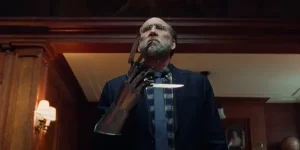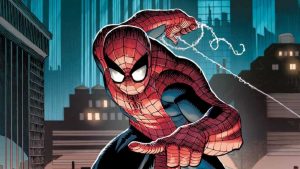
This article contains spoilers for Tomb Raider: The Legend of Lara Croft.
Lara Croft, the protagonist of the Tomb Raider franchise, is one of the most iconic and enduring characters in video games, and her adventures continue in the Netflix original animated series Tomb Raider: The Legend of Lara Croft. Developed for Tasha Huo and starring Hayley Atwell as Lara, the show is set in the video game reboot timeline that began in 2013 and concluded with 2018’s Shadow of the Tomb Raider. And while featuring a relatively self-contained story, perfectly accessible for those who haven’t played any of the Tomb Raider games, The Legend of Lara Croft not only contains nods to the wider video game franchise but provides a natural evolution for Lara and her journey.
Bridging the Chronicles and Survivor Timelines
Shadow of the Tomb Raider ended with Lara vowing to protect the world’s oldest secrets from falling into the wrong hands after barely stopping a villain from using a Mayan artifact to trigger the apocalypse. Those sensibilities and guiding mission statement remains consistent in The Legend of Lara Croft, though the animated series avoids having its own story being firmly rooted to the events of the game as Lara continues to explore the ruins of lost civilizations in the most remote corners of the world. And just like in the reboot, or Survivor, trilogy, Lara has learned that she no longer has to do this dangerous work alone.
The most visible and recurring element introduced in the Survivor trilogy that returns in The Legend of Lara Croft is her companion and close friend Jonah Maiava, with Earl Baylon reprising his fan-favorite role for the series. Jonah isn’t the only ally Lara has on this particular adventure, with the franchise’s resident tech expert Zip (Allen Maldonado) lending his support – and wry sense of humor – to Lara. What makes Zip’s inclusion noteworthy is he remains the only character (beside, Lara, of course) to appear in all three franchise timelines: The original timeline in 2000’s Tomb Raider: Chronicles, the Legend timeline starting in 2006’s Tomb Raider: Legend, and, with his appearance in The Legend of Lara Croft, the Survivor timeline.
Through her supporting cast and other allusions, The Legend of Lara Croft is not only a continuation of the most recent Tomb Raider games but a celebration of its various eras. This extends to the set pieces and international locales beyond the Survivor trilogy, including a sequence throughout Paris reminiscent of 2003’s Tomb Raider: The Angel of Darkness and plenty of nods to Legend and its memorable action beats.
The Evolution of Lara Croft
The changes to Lara herself are subtle throughout The Legend of Lara Croft but they’re definitely there, more so than just keeping Lara as a relatively static protagonist in the inaugural season. The Survivor trilogy started with Lara as a hardened survivalist who has to deal with betrayal before gradually relearning to trust others, with Jonah being one of the first and the closest. Trauma had defined the early installments of the Survivor trilogy and, by the events of The Legend of Lara Croft, it appears that Lara has overcome and reconciled with much of that past trauma as she expands her circle of allies.
Moreover, this is a Lara that has a brighter outlook and her own burgeoning sense of sarcastic humor as The Legend of Lara Croft progresses. Lara clearly is having fun with the acrobatic and perilous antics she gets into throughout the show and openly cracks jokes without venturing into camp as Tomb Raider harkens back to its more escapist roots. The Survivor trilogy started out as a gritty and dark reboot to the franchise and The Legend of Lara Croft leans into the freewheeling action-adventure spirit that made the games so beloved in the first place.
Lara Croft Earns Her Iconic Weapons
At the end of The Legend of Lara Croft, Lara receives her matching pistols, her signature weapons for much of the franchise, including her initial live-action appearances starring Angelina Jolie as the character. For the majority of the Survivor trilogy, Lara primarily relied on her archery skills to fend off enemies, gradually incorporating other weapons into her arsenal as the games’ story progressed. By gaining her pistols, Lara essentially gets her Excalibur, her Skywalker lightsaber, her Wonder Woman Lasso of Truth. Lara was introduced wielding twin pistols as her default weapon and they’ve become a major part of her iconography moving forward.
Between this and Lara becoming a more confident, self-aware, and fun-loving character, The Legend of Lara Croft essentially serves as a bridge between the Survivor trilogy and the classic Tomb Raider that was first introduced to gamers in 1994. More than just a thrilling adaptation and narrative continuation of the games, The Legend of Lara Croft is a missing link between distinct eras for the franchise. And coming in just in time for Tomb Raider’s 30th anniversary, this evolution couldn’t be a richer way to celebrate the franchise.
Tomb Raider: The Legend of Lara Croft is available to stream on Netflix.
The post Netflix’s Tomb Raider Series Ending Brings Lara Croft Full Circle appeared first on Den of Geek.





